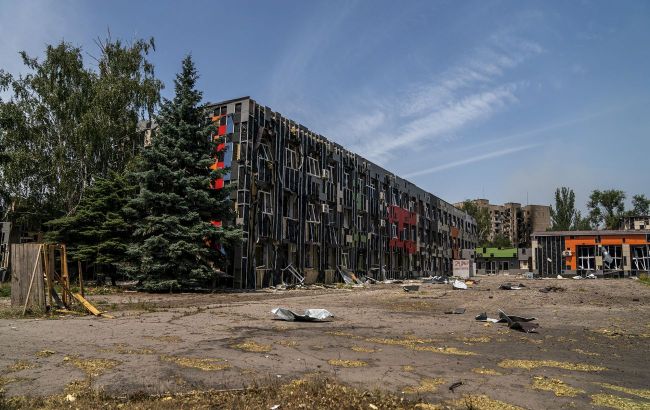Before and after: What destroyed Toretsk in Donetsk region looks like after Russia's invasion
 Archive photo: Toretsk, the Donetsk region (GettyImages)
Archive photo: Toretsk, the Donetsk region (GettyImages)
Due to constant attacks by the Russian army, the Ukrainian city of Toretsk in the Donetsk region has been almost completely destroyed, according to the Facebook page of the Khyzhak (Predator) brigade.
"Once a city of miners, sports, and culture. Today — a frontline, a scorched wasteland, and empty streets. This is what Toretsk looks like after its so-called ‘liberation’. The Russian plague has burned everything alive," reads the caption under a photo of the destroyed city.
The images show Toretsk before and after the Russian invasion — including the Avanhard Stadium, the Saint Matrona Mine, the Ukraine Palace of Culture, the House of Creativity, apartment buildings, and streets once served by public transport.
Before the war, "Toretsk was a lively, hardworking city full of people." Nearly 40,000 Ukrainians lived there. The city had operating coal mines, a beneficiation plant, a bread factory, and various industrial facilities.
"The pride of the city was the Ukraine Palace of Culture at the Tsentralna mine — with a winter garden, rehearsal halls, and children’s clubs. The Avanhard stadium used to draw up to 10,000 spectators. Today, it’s a battlefield," the report states.
For reference, according to Vadym Filashkin, head of the Donetsk Regional Military Administration, only 48 people remain in Toretsk, and 142 across the entire Toretsk community. Ukrainian soldiers are trying to deliver aid to those who stayed behind.
Earlier, the 100th Separate Mechanized Brigade of the Ukrainian Ground Forces released a video showing Toretsk after the Russian invasion.
What is known about Toretsk
Before the outbreak of war in Donbas in 2014, Toretsk (known as Dzerzhynsk until 2016) was home to approximately 35,000 people. The city had a well-developed industrial infrastructure and a vibrant economic life.
Its economy was primarily based on coal mining: the mines were the main employers for the local population, and mining shaped the city’s identity for generations.
Toretsk also had a functioning railway station, which served as a key logistical hub for transporting coal and other goods.
Earlier, we reported that the situation around Toretsk is deteriorating. If Russian forces manage to seize control of the city, they could then "open up" the direction toward Kostiantynivka.
More details can be found in the RBC-Ukraine's As Washington talks peace, Moscow escalates. Latest from Russia-Ukraine frontlines material.

